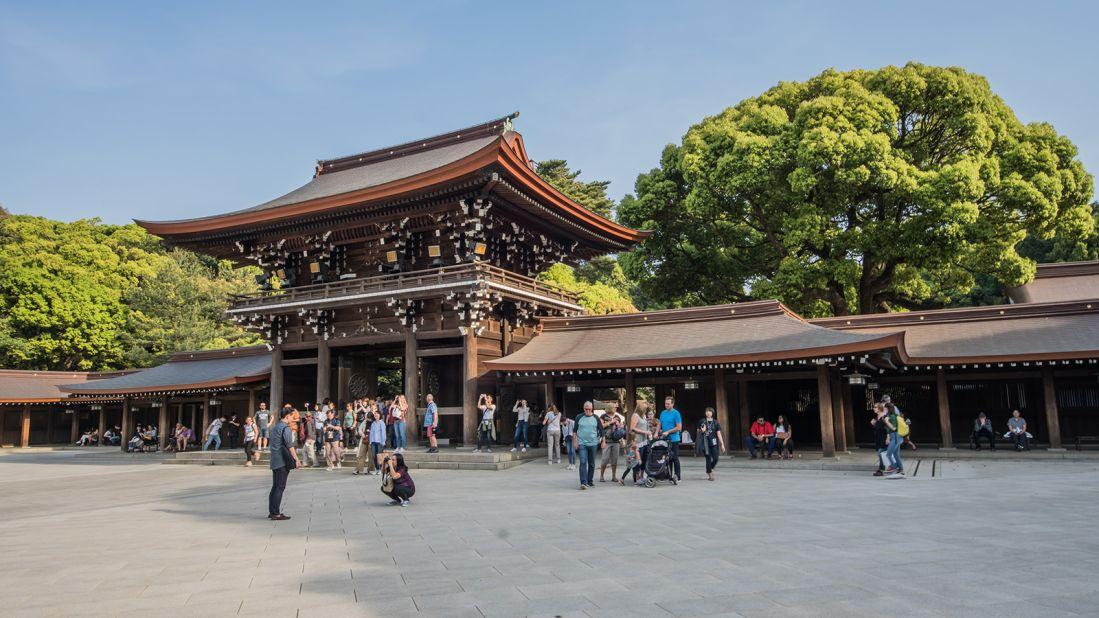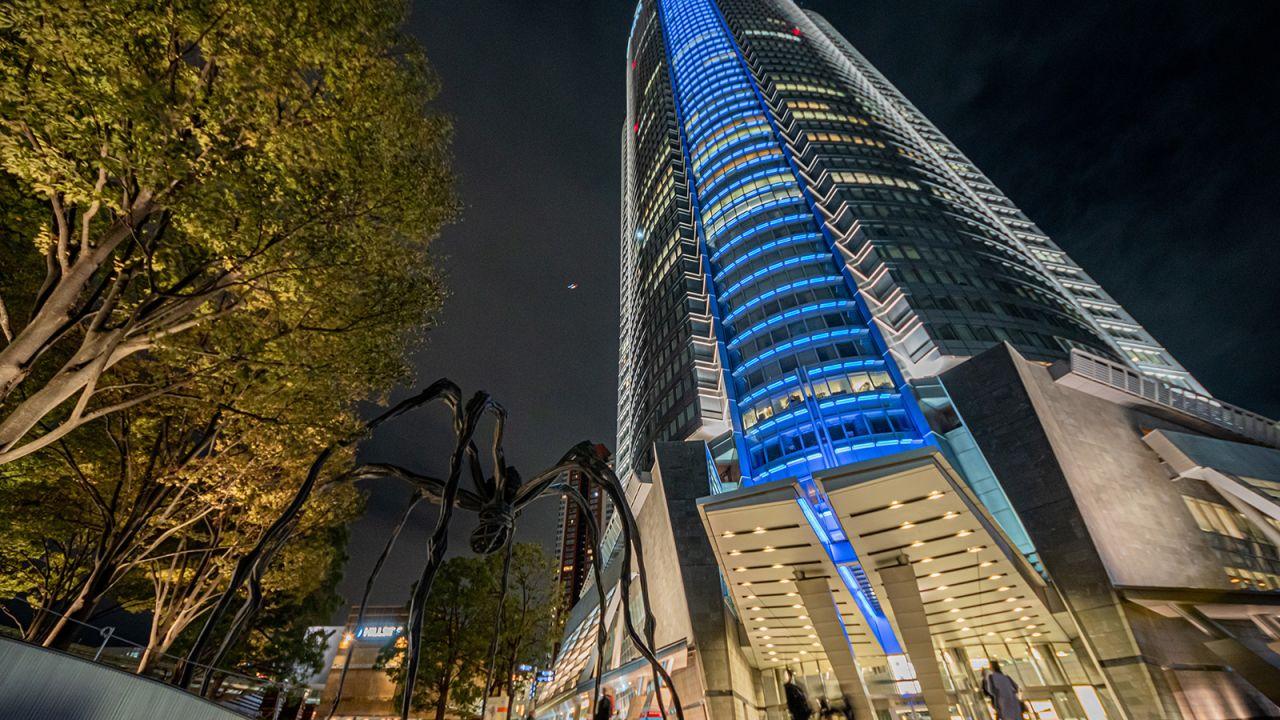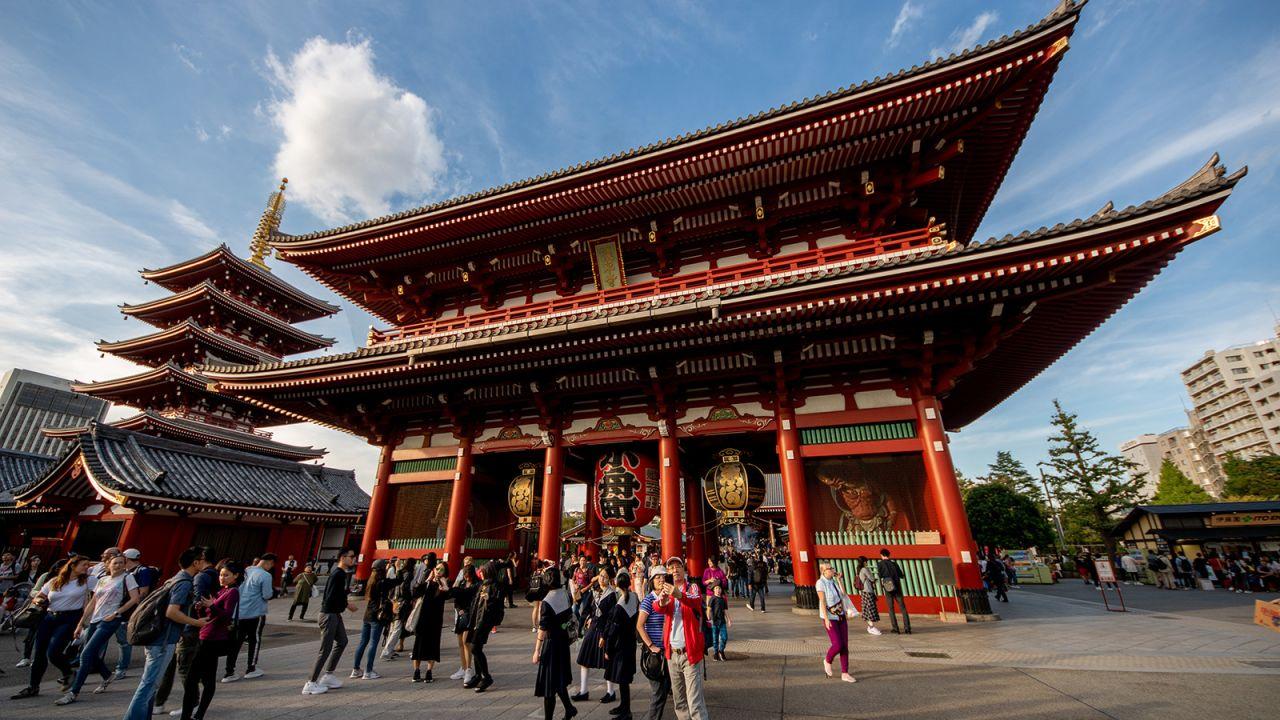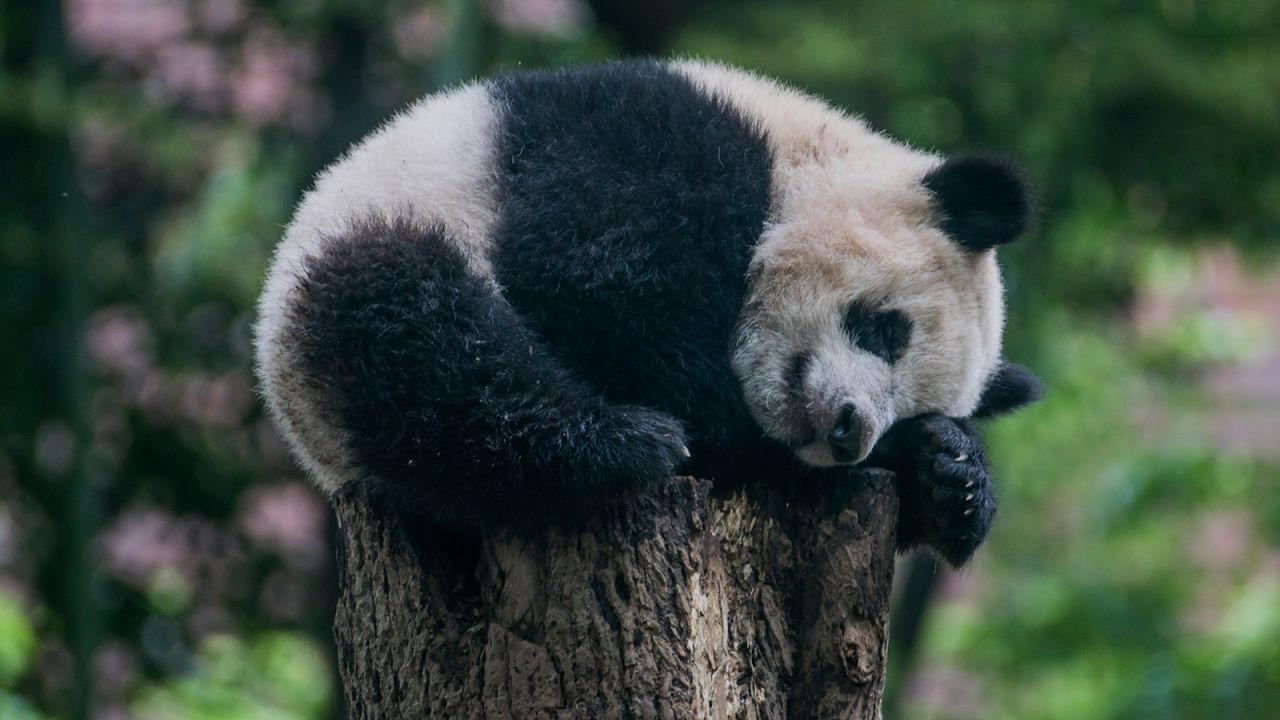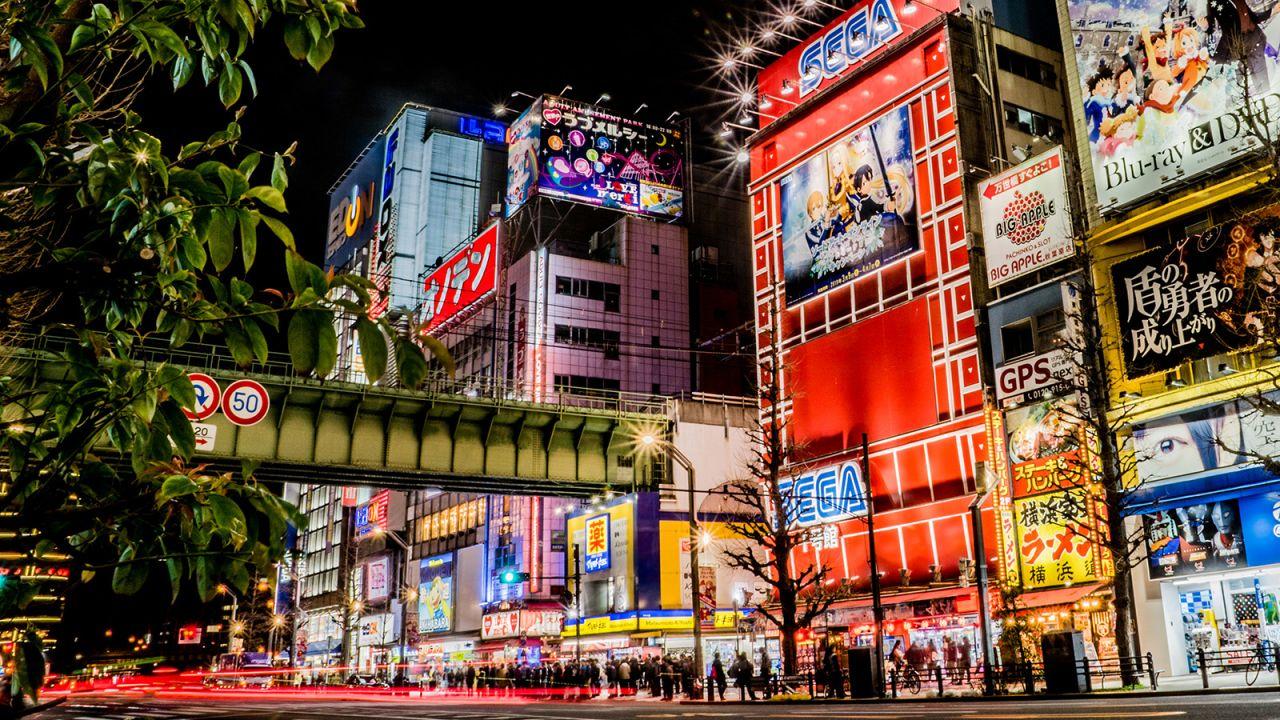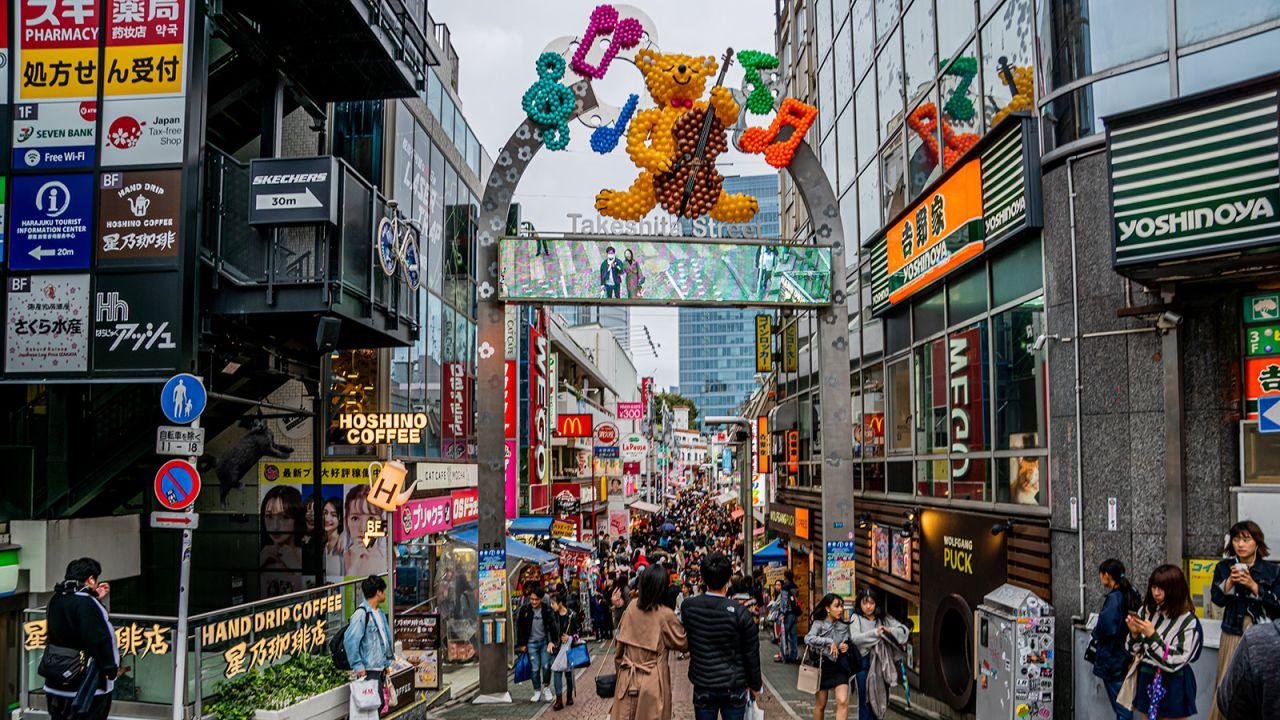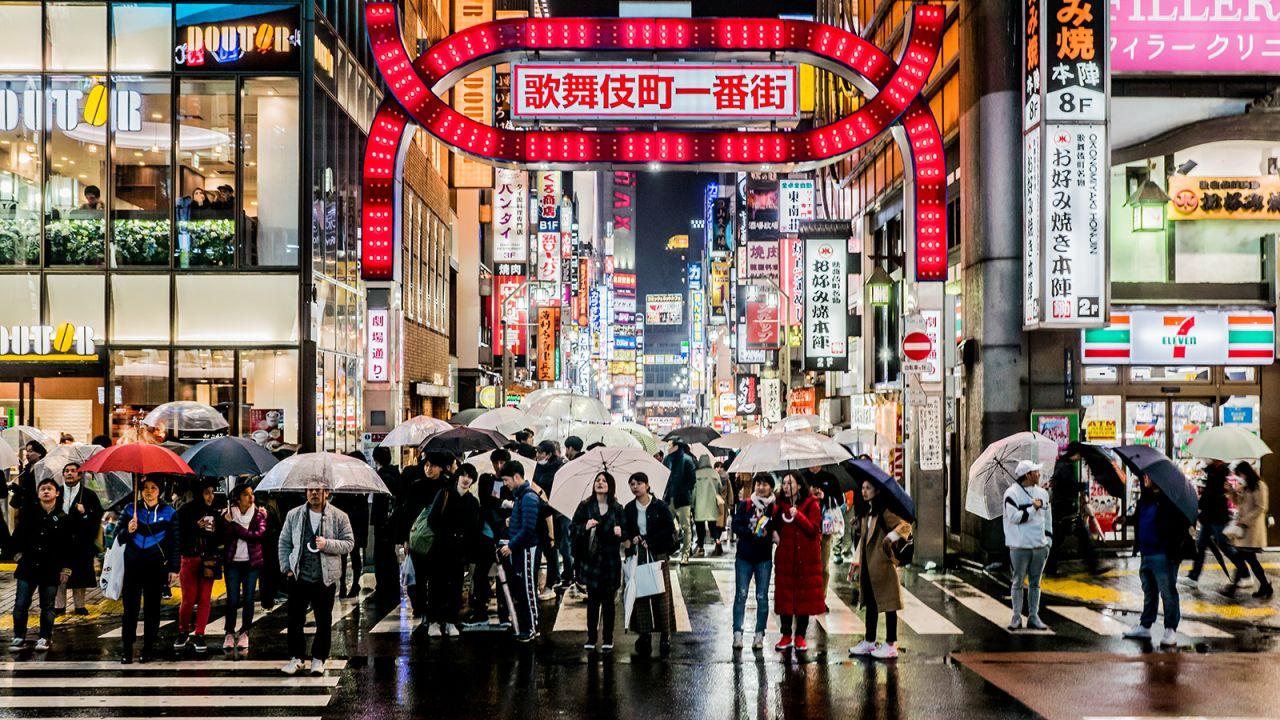Meiji Jingu Shrine: This shrine, dedicated to Emperor Meiji and Empress Shōken, was constructed in 1920 as a tribute to their memory.
Ameya-yokocho Market: Previously a hub for illicit goods during wartime, the Ameya-yokocho market now offers a diverse range of military surplus items, budget-friendly souvenirs, and delectable street food.
Considered by many as a pinnacle of modernity, Tokyo is a bustling city that consistently gazes towards what's to come.
Yet, a closer examination reveals the rich tapestry of cultural heritage seamlessly woven with its march towards the future.
Beginning its journey as Edo, today's Tokyo functioned as the central command for the powerful Tokugawa shogunate, Japan's military government, from the years 1603 to 1868. This era of tranquillity marked the evolution of the city into not just a global metropolis but also the birthplace of the Ukiyo, or "floating world" way of life.
Embracing the hedonistic elements of this lifestyle, inhabitants partook in a plethora of cultural experiences such as witnessing Kabuki theatre performances, entertaining with geishas, and participating in thrilling sumo wrestling matches – customs that persist and thrive even today.
The era in question was vividly brought to life through Ukiyo-e; an art form involving the creation of paintings and woodblock prints. Iconic pieces such as Hokusai's "The Great Wave off Kanagawa" gave a glimpse into diverse elements of the period including warriors of samurai lineage, intricate nature scenes, and the occasional erotic art piece.
Currently, the Edo-Tokyo Museum is hosting a fresh exhibition that highlights the illustrative brilliance of the Ukiyo-e creators from the said era. This exhibition is just a single piece of a giant mosaic of events that embraces art, music, and dance, both of conventional and modern forms, being orchestrated as Tokyo prepares itself for the 2020 Summer Olympics.
That said, Tokyo's commitment to keeping the old traditions alive, while simultaneously advancing as a city of the future, is not limited to specified events. It is evident throughout the city's fabric and daily life.
Herein, we provide a helpful guide for those intending to explore Tokyo in its entirety, touching upon both the timeless traditional relics and the innovative modern spectacles in some of the city's most frequented districts.
Roppongi
The Mori Tower is the centerpiece of Roppongi Hills.
Tokyo’s Roppongi district might be most famous for its nightlife, but its raucous reputation has recently given way to a more refined set of nightclubs, bars and restaurants – with companies like Apple and Google even settling into the expat-friendly neighborhood.
It’s also a top destination for art lovers.
The Mori Art Museum, for instance, sits atop Mori Tower, one of Tokyo’s tallest and most prominent buildings. (Part of the Roppongi Hills complex, the tower’s rooftop Tokyo City View offers views of nearby Tokyo Tower and a 360-degree view of the surrounding neon cityscape.)
Upcoming exhibitions at the museum, which highlights contemporary Asian art, include next year’s “STARS: Six Contemporary Artists from Japan to the World” exhibition. It features some of Asia’s best-known international artists: Yayoi Kusama, Lee Ufan, Tatsuo Miyajima, Takashi Murakami, Yoshitomo Nara and Hiroshi Sugimoto.
Completing the “Art Triangle Roppongi” are the National Art Center – Japan’s largest art museum – and Tokyo Midtown’s Suntory Museum of Art.
While in the area, we recommend honoring the origins of Roppongi, which trace back to the funeral of Shogun Hidetada’s wife, Oeyo, in 1626. The stately affair included a procession from Roppongi to downhill Zōjō-ji Temple.
The funeral procession gathered the elite of the era, and as gratitude for planning the event, the four Buddhist priests responsible were rewarded handsomely. They invested their sums into building new temples, shops and houses that would entice settlers to the development.
Today, the Buddhist temple retains its original 69-foot-tall gate. Constructed in 1622, the Sangedatsumon stands as the oldest wooden structure in Tokyo.
Tokyo Station Hotel hits century mark
Asakusa
The bright red Senso-ji temple is punctuated by the adjacent five-story pagoda.
One of Tokyo’s most traditional neighborhoods, historic Asakusa’s charms center around the oldest and perhaps most eminent Buddhist temple in the city – Sensō-ji.
The bright red temple, completed in 645, is punctuated by the adjacent five-story pagoda, the Asakusa Shinto shrine. Visited by millions annually, the initial entry gate, the Kaminarimon, is a symbol of both Asakusa and the entire city of Tokyo.
Meanwhile, also dating back centuries, nearby Nakamise shopping street stretches out along the approach to Sensō-ji, brimming with souvenir shops. The classical surroundings make it a popular destination for tourists to don yukatas and kimonos, which are available to rent or buy.
In the twilight, when commercial establishments call it a day, their drawdown barricades unveil a meticulously painted mural representing a ukiyo-e tableau.
The planet's highest structure, the towering Tokyo Skytree, an impressive 2,080 feet above ground, dominates many extensive side alleys of Asakusa. The riverbank outlook of the area has emerged as a beloved spot to watch the sun go down and observe the sparkling urban landscape light up the sky at twilight.
Hitori: The Tokyo-based liquor parlour exclusive to lone tippers
Ginza
Ginza is well-known for the iconic Seiko Building, which showcases a stunning clock tower, symbolizing the area's charm and grandeur.
Boasting Tokyo's highest real estate prices, Ginza's wide boulevards give a nod to European architectural influences, adding to the neighborhood's allure.
Renowned for its extravagant shopping experiences, Ginza is home to the magnificent Ginza SIX, a colossal shopping complex housing over 240 stores. A particular highlight is Chuo-dori Street, the main shopping strip that exhilaratingly closes off to vehicles on weekends, allowing pedestrians to fully immerse themselves in the vibrant atmosphere.
But Ginza's allure extends beyond shopping, as it is also famed for its exceptional dining scene. Indulge in culinary excellence at the Zen-like Ginza Kojyu and the elegant Sushi Yoshitake, both three-Michelin-starred restaurants that accommodate only eight guests at a time, making reservations a coveted feat.
Delve into the fascinating history of Ginza while exploring the district, as it reveals numerous remnants of its glorious past. From architectural marvels to hidden gems, Ginza offers a delightful blend of traditional and modern experiences.
One of the highlights of Tokyo's culture is undoubtedly the renowned Hattori Clock Tower.
This iconic structure has a rich history beginning in the late 19th century, when a young and talented watchmaker, Kintarō Hattori, established his business in the district. Hattori's timepieces quickly became preferred by the Imperial Household acknowledging its superior craftsmanship. Originally named as 'K. Hattori', this business eventually became the globally recognized brand Seiko, which now holds a central place in the heart of Ginza.
The Hattori Clock Tower graced the area from 1894 to 1921 after which the Wako department store, a retail subsidiary of the company, was established in 1932, adorned with a newly constructed clock tower as a tribute. This edifice still stands today, symbolising the resilience of Tokyo as it is one of the very few structures that survived both the post-earthquake period and pre-war era.
Simultaneously, Ginza boasts the timeless beauty of the Kabukiza Theatre. This stunning venue, modelled after traditional Japanese castle designs, was refurbished in 2013 but has been in its present location since as far back as 1889. It's a cultural gem that's definitely worth incorporating into your itinerary.
Kabukiza Theatre is dedicated to the art of Kabuki, a classical form of Japanese theatre famous for its dynamic acting, vibrant makeup, and flamboyant costumes. A fascinating exhibit on the theatre's fifth floor, the Kabukiza Gallery, has a stunning collection of actual props and costumes that have been used in performances over the years.
In an interesting aside, Kyoto's Sagano Bamboo Forest is considered as one of the world's most beautiful bamboo groves, providing a captivating contrast to the cultural landmarks of Tokyo.
Ueno Park
Immerse yourself in the vibrant culture of Tokyo by visiting Ueno Park, home to the adorable panda cub, Xiang Xiang. Xiang Xiang, born in 2017, has become an unofficial symbol of this renowned park, which attracts over 10 million visitors each year.
During sakura season, Ueno Park transforms into a picturesque wonderland, where you can witness a sea of cherry blossoms and join locals in the traditional hanami experience of enjoying these beautiful flowers. As you stroll through the park, don't miss the opportunity to explore Japan's oldest zoo, Ueno Zoo, where Xiang Xiang resides and captivates visitors with her playful antics.
Aside from its natural allure, Ueno Park also caters to art and history enthusiasts. Discover the park's other cultural attractions that embrace traditional and modern art forms, allowing you to delve deeper into Tokyo's rich heritage.
Stretching towards the sky as a beacon of regrowth in the aftermath of the 1923 Great Kantō quake, this verdant recreational area in Tokyo soon became the backdrop for Japan's inaugural public art institution, the Prefecture Art Museum, known today as the Tokyo Metropolitan Art Museum, established three years post-quake.
A mere eight years later, the renowned Tokyo Museum of Science, now referred to as the National Museum of Nature and Science, made its debut as well.
In this day and age, it offers sanctuary to six distinguished museums. Complementing these two are the Tokyo National Museum, the Ueno Royal Museum, the National Museum of Western Art, and the Shitamachi Museum.
During the devastating period of World War II, the vicinity of the park evolved into a black market hub. This hotspot later grew into the present-day Ameya-yokocho Market, a bustling venue where one can find everything from remnants of military surplus to affordable souvenirs and a variety of delectable street food options.
Experience the fusion of tradition and modernity through 25 beloved Japanese culinary delights, from the crispy tempura to the savory miso.
Exploring Yanaka
Yanaka, a neighborhood largely unscathed by environmental calamities and war-related devastation, presents a fascinating glimpse into Tokyo's enchanting history with its well-preserved "Shitamachi" ambiance.
You'll likely notice the abundance of friendly felines that seem to have adopted the tranquil district as their home, accompanying pedestrians on their ambling tours through the Shōwa era's characteristic charm that Yanaka evocatively encapsulates.
Take a leisurely walk down the quiet alleyways and discover a plethora of quaint, independently-owned shops. The specialty snack of the district is Senbei, or rice crackers, a treat not to miss. Additionally, the fish pancakes at Maneki-ya in Yanaka Ginza have garnered a loyal following. Modern establishments, like the popular Kayaba coffee shop, serve deliciously fluffy egg sandwiches, fusing the traditional with the trendy.
Yanaka's laid-back vibe has given rise to an assortment of unique art galleries that are as intriguing as the locality itself.
HAGISO, an art venue situated in a traditional wooden apartment, offers not only art but also a cozy café experience. Similarly, SCAI, an avant-garde art mecca, operates out of a repurposed bathhouse, further adding to Yanaka's mashup of old-meets-new charm.
With over 7,000 graves, Yanaka Cemetery is the biggest in Japan, though its many gardens offer an uplifting ambiance. In April, abundant pink sakura trees line the cemetery’s famous “Cherry Blossom Avenue.”
Yanaka’s many temples are particularly inviting. These include the district’s oldest temple, Tennōji. Established in 1274, it’s known for its bronze Buddha statue, cast in 1690.
16 Japan experiences every traveler needs to enjoy
Akihabara
Akihabara is a popular neighborhood for fans of video gamees and anime.
Though some affectionately refer to it by its shortened label, “Akiba,” Akihabara may be best known for its “Electric Town” moniker.
The district’s many neon facades are most closely associated with video games and anime culture, but the futuristic hub of Japanese popular culture is actually the site of one of the original entrance gates to the city and was home to Edo-period samurai.
When the Akihabara train station opened in 1888, the area began to flourish. In the 1930s, department stores specializing in home electronics earned the area its “electric” nickname, prospering primarily on sales of washing machines, refrigerators and stereos.
By the 1980s, the stores began dealing in personalized computers, which set it towards catering to “otaku” goods. (Otaku is a Japanese term for people with obsessive interests which has come to be a term of endearment describing a wide-range of geekdom.)
Kanda: Tokyo's "anime temple."
But buried under all those lights, remnants of its past remain – albeit with a few modern nods to the neighborhood.
Kanda Shrine dates back nearly 1,300 years. Originally built near Ōtemachi district, it was moved to the current site in 1616. Destroyed by the 1923 earthquake, it was rebuilt in concrete and subsequently survived World War II firebombings.
Due to its proximity to Akihabara, it’s largely known as the “anime temple.” Nozomi Tojo, a character from the anime series “Love Live!,” a purple-haired school girl from Akihabara, is the shrine’s official mascot.
Here, ema prayer boards, normally scrawled with wishes, are instead meticulously illustrated with anime characters. Charms promising to protect electronics from fault can be purchased here as well. The microchip-designed talisman comes in a three-piece set: a cell-phone sticker, a computer-sized bookmark and a wallet-sized card.
Aomori, Japan: Life in one of the world's snowiest cities
Shibuya
Experience the vibrant culture of Tokyo by exploring its diverse attractions. Takeshita Street offers a glimpse into the exciting world of youth fashion, where teenagers gather to showcase the latest bold trends that push boundaries.
While Shibuya is famous for its bustling crosswalk, known as the world's busiest intersection, it is also home to Harajuku, a vibrant hub of Japanese youth culture and fashion.
Once you've enjoyed these well-known hotspots, make sure to visit Yoyogi Park and the adjacent Meiji Shrine. As you pass through the towering wooden torii gate, which holds the title of the world's largest, you'll discover a peaceful oasis amidst the city's hustle and bustle.
Immerse yourself in the serene greenery of Yoyogi Park, a perfect contrast to the energetic atmosphere of Tokyo. Stroll through its tranquil paths, relax in the shade of cherry blossom trees, and witness locals engaging in various activities like yoga or picnicking.
Continue your journey by exploring the impressive Meiji Shrine, dedicated to the Emperor Meiji and Empress Shoken. Marvel at the stunning architecture, learn about Japan's imperial history, and experience a sense of tranquility within the shrine's sacred grounds.
Yoyogi Park is home to the world's largest wooden torii gate.
After the original gate was destroyed by a lightning strike in 1966, Yasushi Kawashima, a timber magnate from Tokyo, committed himself to eventually discovering a 1,500-year-old Japanese cypress tree in Taiwan that would be used to construct the replacement, completed in 1975, that stands today.
Harajuku: A first-timer's guide to one of Tokyo's most famous neighborhoods
The Meiji Shrine complex was built in 1920 to honor Emperor Meiji and his wife, Empress Shōken, thus earning its Jingu designation, signifying the shrine’s connection to Imperial family.
Near the south gate entrance lies the newly inaugurated Meiji Jingu Museum, showcasing personal artifacts of the emperor and empress.
Across the street from the park, the Yoyogi National Stadium’s sweeping suspension roof was designed by celebrated Japanese architect Kenzo Tange to host sporting competitions in 1964.
Shinjuku City
Shinjuku is Tokyo's largest and busiest entertainment district.
Tokyo’s busy Shinjuku City pulsates with energy. The district is home to both the city’s largest central entertainment zone, Kabukichō, and the shiny skyscraper district where you can find luxurious hotels for every budget. Websites such as Tokyo Hotels at tokyo-hotels-stay.com and tophotels.com offer a range of options for you to choose from. One of these sought-after locations includes the infamous Park Hyatt – featured in the film “Lost in Translation”. Another fascinating landmark in this area is the Metropolitan Government Office, whose observation decks are open to the public free of charge. Immerse yourself in the city’s bustling atmosphere in Shinjuku, take in the vibrant nightlife, then retire to your comfortable accommodations secured at your choice of one of the above hotel booking options.
Shinjuku’s train station, one of the world’s busiest, serves millions of passengers daily (five of the city’s major train lines converge there).
The area is also where you’ll find the studio of famed Japanese avant-garde artist Yayoi Kusama, who continues to produce new works at the nearby psychiatric hospital where she has held permanent residence since the late 1970s.
Step into the frenzy of the world's most chaotic crossing, Shibuya Crossing, in Tokyo.
The Yayoi Kusama Museum, a modern cultural highlight which was inaugurated in 2017, offers a comprehensive collection of Kusama's works. Curated by Akira Tatehata, the museum showcases a significant timeline of the artist's works, from her early pieces to her recent creations. The museum is renowned for featuring Kusama's iconic dotted pumpkins, in addition to her diverse range of paintings and a spectacular light sculpture.
By contrast, the peaceful ambiance of the adjacent Koukokuji Buddhist temple creates a mystique of its own. The temple is home to the ultra-modern Ruriden columbarium, known for housing 2,046 LED-lit glass Buddha statues. Each of these statues represents the ashes of the deceased that lay entombed therein, giving prominence to the fact that this facility is truly the most technologically advanced cemetery in the world.
The columbarium is equipped with an electronic keyboard to search for the deceased. As you type in a name, the corresponding digital stone lights up. Furthermore, entering the temple's name in Kanji triggers a stunning light display that beautifully portrays the traditional Japanese seasons, weaving vivid and mesmerizing tales of life throughout the year. This unique feature uniquely blends the modern with the traditional, just as Tokyo itself does.
Not far off lies the expansive Shinjuku Gyoen National Garden, an oasis of tranquility amidst Tokyo's bustling streets. Since 1903, it had been the private garden of the Imperial Family, until it was made accessible to the public in 1949.
The beloved garden within the park becomes a popular spot during the time of hanami, or the viewing of cherry blossoms. Traditional tea houses scattered across the park dole out hand-prepared green tea and sweet treats, dispensed through vending machines.
